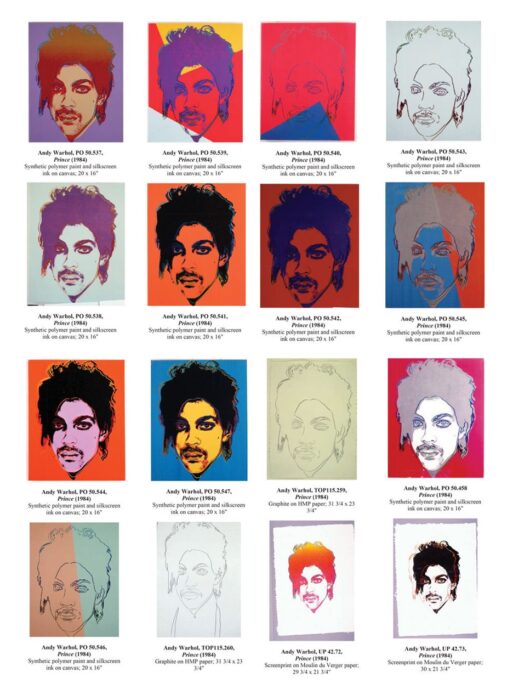Prince series
Warhol created the orange portrait of Prince in 1984 as part of his Prince series, consisting of 16 Prince portraits. In 2016, shortly after Prince’s death, the Warhol Foundation granted permission to publisher Condé Nast to use the Prince screenprint as the cover of a magazine in memory of Prince, in exchange for payment.

Copyright infringement
When Goldsmith saw the publication, she objected to it. According to Goldsmith, the Foundation had infringed upon her copyright. After all, Warhol had used her photograph to create the artwork, and she had not given permission for this publication.
Fair use
However, the Warhol Foundation defended itself by arguing that this use should be considered fair use. Fair use is a concept in American copyright law. Under certain circumstances, incorporating someone else’s work into your own artwork can be considered ‘fair’ and therefore permitted. The fair use analysis considers, among other things, whether the use of the work is transformative, meaning if something substantially new is added that gives the work a different character or meaning. Additionally, whether the use is commercial or non-commercial also plays a significant role.

New meaning
According to the Warhol Foundation, Warhol’s Prince screenprint adds a new message and meaning to Goldsmith’s photograph. Warhol transformed the vulnerable and uncomfortable Prince in the photo into an iconic and larger-than-life figure. Therefore, it constitutes transformative use and, in the Foundation’s view, fair use.
Minor alterations
However, the Supreme Court sided with Goldsmith. “Lynn Goldsmith’s work, like that of other photographers, is entitled to copyright protection, even against famous artists,” stated the Court. Although Warhol’s modification provides a new expression to Goldsmith’s photo, they are still considered “minor alterations” according to the Court.

Same purpose
In this case, the Court found that the purpose and character of both Goldsmith’s photo and Warhol’s screenprint are quite similar: both are used to illustrate articles about Prince and are essentially interchangeable. Additionally, the Court noted that the use of this screenprint is purely commercial. This weighs heavily in the determination that there is no transformative use and fair use. Therefore, the Andy Warhol Foundation will have to compensate Goldsmith. It is worth noting that not all nine justices on the Court agreed with the decision, as two justices would have preferred a ruling in favor of Warhol.
Implications
Although the case specifically pertains to the use (commercial license for a magazine) of a specific work (Orange Prince screenprint), the ruling by the highest court in the United States seems to impose general limitations on the artistic freedom of appropriation artists who incorporate others’ works into their own. Particularly, the manner of use of the work appears to play a significant role. Therefore, caution should be exercised when commercially exploiting derivative art. One of the justices, Neil Gorsuch, provides an example that if the Prince screenprint were part of an exhibition about Warhol in a non-profit museum, this usage—unlike the commercial license—might be considered fair use.
Bas Kist
Parts of this article were previously published (in Dutch) in the Volkskrant.


